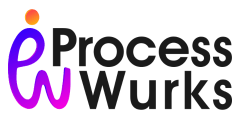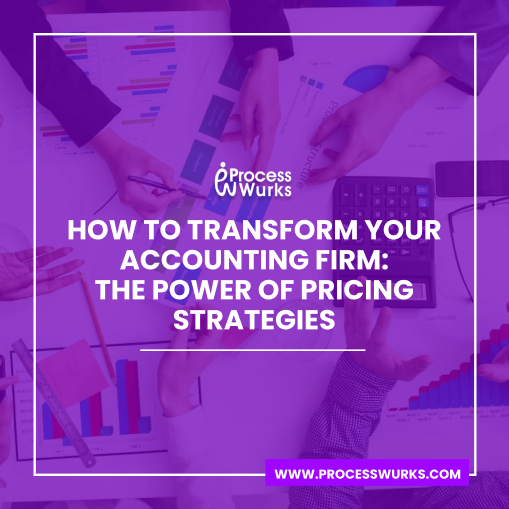From Clicks to Conversions: Your Complete Guide to Planning a Winning Facebook Campaign

Share This Post
“Learn how to plan a successful Facebook campaign from clicks to conversions with our comprehensive guide. Boost your social media strategy today.
Creating a successful Facebook Ads campaign for bookkeeping and accounting firms can be a daunting task. With so many competitors vying for the attention of potential customers, it is important to have a well-thought-out plan and strategy in place. This blog provides a complete guide to planning an effective Facebook Ads campaign for bookkeeping and accounting firms, from defining your target audience to analyzing performance. By following these steps, you can ensure that your ads are seen by the right people and convert clicks into conversions, leading to higher success rates on the platform.
Also Read: Facebook Page Optimization for Women Accountants: Building a Strong Online Presence
How to Set up a Step-By-Step Facebook Ads Campaign
Before you start advertising, you should think about why you’re doing it and what you want to get out of it. By figuring out how you’ll measure success before your ads go live, you’ll be able to choose which ad goal will work best for you.
For instance, if you want to use Facebook ads to get more people to download your mobile app, your success metric could be 100 downloads in the first month. If you want to get more leads, you could judge your success by how big your email list is. Before you start a campaign, you should think about why you want to advertise.
Step 1: Create An Advertising Account:
When you join Facebook, you are automatically given a personal ad account ID. If you go to Ads Manager and look in the top left corner, you can find this ID.
To use Facebook Ads Manager, you need a payment method that has been checked and:
- A page on Facebook or
2. To be an admin, editor, or advertiser on someone else’s page
Follow the steps on Facebook to set up a Page for your business if you don’t already have one. Any Page you make will have an ad account set up for it automatically.
If you want to advertise for a Page that was made by someone else, you need to ask the Page admin to give you a role on the Page as an admin, editor, or advertiser.
You’ll need a Business Manager account if you already have an ad account for your Page but want to make a new one. You can make a new ad account once you sign up for Business Manager.
Step 2: Go to the Facebook Ads Manager page.
The Facebook Ads Manager tool is used to run all of Facebook’s advertising campaigns. Follow these steps to use it on a desktop computer or a laptop.
This direct link to Facebook Ads Manager is the easiest way to find it. You’ll go straight to the Facebook Ads Manager for your own ad account. If you manage more than one ad account, you can choose the right one from the account drop-down menu.
To get to Ads Manager from your business page, go to the left sidebar and click on the drop-down arrow next to “Ad Center” on any Facebook page. Then, from the drop-down menu, choose “All Ads.” You can choose to click “Ads Manager” at the bottom of that page.
You’ll be taken to your Facebook Ad Accounts page, which has a quick summary of your ad account (s). If you have access to more than one ad account, choose the account where you want to run ads.
If you’d rather use your phone, Apple and Android both have apps for Facebook Ads
Step 3. Choose Your Goal
Click the green “Create Ad” button to start making your first ad.
Facebook will take you to a page where you will be asked to choose a campaign goal.
You can approach an ad campaign in many different ways, depending on what you want to do. There are three types of benefits to these ways:
Also Read: Social Media Marketing Tips for Accounting Firms
Awareness
This group of goals is for getting people interested in your product or service. You can either:
- Show your ads to the kinds of people who are most likely to remember them.
- Show your ads to as many people as possible to reach more people.
Top tip: If you have a small budget, awareness ads are likely to get you the most for your money. Moz found that for $1 a day, you can reach an extra 4,000 people. Even though this didn’t quite match what we saw, it’s worth a try.
Consideration
You might want to choose this category if you want people to start thinking about your business or searching for more information about it. Things that fall into this category are:
- People can be sent to a place on or off of Facebook.
- Get more Page likes, event responses, or post reactions, comments, or shares
- Get people to download your app.
- Get more video views
- Increase the number of leads
- Get people to interact with you on Messenger, WhatsApp, and Instagram.
Conversion
In this category, the goals are meant to get people to buy or use your product or service. You may opt to:
- Get more people to interact with your website.
- Get people to take you up on your offer.
- Increase product or catalog sales
- Bring people to your stores.
After you choose your marketing goal, you will be asked to give your campaign a name. Make sure that the name of your campaign is something that will be easy for everyone to remember.
Step 4: Set up a Budget for Your Campaign
Now you need to decide how much money you want to spend on your ad. When you make a budget, you should keep in mind that this number is the most money you want to spend. You can set a budget for each day or for the whole campaign.
Daily: A daily budget limits how much you can spend on ads each day. Facebook will use the criteria you choose to show your ad to the right people at the right time and place. Once your budget for the day is used up, the ads stop running. The next day, the cycle starts all over again.
Lifetime: A lifetime budget is the most money you’ll spend on your ad campaign over its whole run. You tell Facebook a number and a date, and it spends the money based on how well the ads do. When you spend all of your money, the campaign is over.
Step 5: Customize Your Audience
A well-thought-out audience is important for the success of your Facebook campaign because it determines who will see your ad.
As we’ve already said, you can choose who sees your ad based on all of the following demographics:
- Location
- Age
- Gender
- Languages
- Interests
- Behaviors
You can also choose advanced targeting with the Connections setting, which lets you include or leave out people who are connected to certain pages, apps, or events. You can also make your targeting even more specific by retargeting people who have already interacted with your business using custom audiences.
For example, let’s choose a group of people to see an ad for Buffer. Facebook suggests that you narrow your reach in a targeted way to get the most out of your ad.
For this example, we are going to be very specific and choose the following types of people to target:
- Where: in the United States
- Likes: Using social media
- Excluded: People who like Buffer already
- Age: 18–65+
- The English language (US)
This meant that we could reach up to 3,200 out of 14 million people. We could expect 3,200 people to be online on any given day and possibly see our ad.
Step 6: Choose Where to Place Your Ads
Ad placement is where your ad shows up for the people you want to see it. Depending on what you want to accomplish with your ad, you can choose to show it on Facebook, Instagram, Messenger, or the Audience Network.
Facebook recommends using automatic placements for the goal you chose. This lets Facebook optimize placements for you to get the best results at the lowest overall average cost.
But if you want to choose where your ads go, Facebook gives you several ways to do that:
- Feeds: Put ads in feeds to get your business a lot of attention.
- Stories and Reels: Immersive, full-screen vertical ads can tell a rich, visual story.
- In-stream: Get people’s attention quickly while they are watching a video.
- Reels overlay: Sticker and banner ads let you reach people while they watch short-form content.
- Search: Get your business seen when people search on Facebook.
- Messages: Send people who are already connected to your business offers or news.
- In-article: Talk to people using the Facebook mobile app who are reading Instant Articles.
- Websites and apps: Advertise in apps and websites outside of your own to reach more people.
Check out Facebook’s guide to where to put ads to learn more.
Step 7: Make your Advertisement
This is the best part of Facebook ads. Now it’s time to create your Facebook ad. You can use a post that has already been made or start from scratch.
Using an Existing Post
For certain types of ads, such as boosted posts, you can create your ad using a post that’s already on your Facebook Page.
To do this, choose “Use an existing post.” From here, you can choose the page you want to use as your ad from the accounts you have linked.
Creating a New Advertisement
If you’d like to create your ad from a blank canvas, the first task is to select a format. You’ve probably seen many of the Facebook campaign in your own feed, but the ones you can choose from will depend on the goal you set for your ad in Step 3.
Facebook has eight ad formats, and based on the goal of your campaign, it will suggest one or more to you. We have also included the technical rules that Facebook has for some formats.
Photo ads: Images are the most simple way to make an ad, but they can be very effective. These simple ads only use one image, which can be used in different types of ads and in different places.
How Facebook wants photo ads to be made
JPG or PNG is the file JPG or PNG is the file type.
Ratio:1.91:1 to 1:1
Resolution: At least 1080 x 1080 pixels
Maximum File Size: 30MB
600 pixels is the minimum width.
Minimum Height: 600 pixels
First sentence: 125 characters
40 characters in the headline
Thirty-characters
Video Ads: You can promote your product or service with just one video. Videos are more likely to stand out in a news feed because they move.
How Facebook wants video ads to be made
MP4, MOV, or GIF is the file type.
Ratio: 1:1 (for desktop or mobile) or 4:5 (for mobile only)
Resolution: At least 1080 x 1080 pixels
Video Duration: 1 second to 241 minutes
Maximum File Size: 4GB
120 pixels is the minimum width.
Height must be at least 120 pixels.
First sentence: 125 characters
40 characters in the headline
Thirty- characters
Rotating ads: These ads are good for promoting multiple products or services since they can show up to 10 images or videos, each with its own link.
How Facebook wants carousel ads to be made
Image File Type: MP4, MOV, or GIF
File Type: MP4, MOV, or GIF
Ratio: 1:1
Resolution: At least 1080 x 1080 pixels
Carousel cards range from 2 to 10
Image Maximum File Size: 30MB
Video Maximum File Size: 4GB
Video Duration: 1 second to 240 minutes
First sentence: 125 characters
40 characters in the headline
20-character description:
URL of the landing page: Required
Slideshow ads: This type of ad takes a few images and makes a quick slideshow out of them. People who don’t have the time or skills to make videos can use them instead.
Messenger Ads: Use Meta’s Messenger app to send your message directly to the people you want to reach.
Collection ads: This type of ad can only be seen on a mobile device and lets users find and buy products.
The rules that Facebook has for collection ads
Type of image: JPG or PNG;
Type of image: JPG or PNG;
Ratio: 1:1
Resolution: At least 1080 x 1080 pixels
Image Maximum File Size: 30MB
Video Maximum File Size: 4GB
First sentence: 125 characters
40 characters in the headline
URL of the landing page: Required
Stories Ads: These ads show up when someone is looking at a Story on Facebook, Instagram, or Messenger. With these ads, there is a lot of room for creativity.
Playable ads: let potential users test out an app before buying it.
After you choose the format, you need to add visuals and text. If you want your ad to work, the image and text should be interesting enough for people to stop scrolling and click.
8. Place your Order
Click the “Publish” button at the bottom right of the page to send in your ad.
Once you post your ad, Facebook will hold it until they can review it to make sure it meets their requirements and doesn’t break their rules for the community. You can expect it to be looked at in 24 hours. When the ad goes live, Facebook will send you an email to let you know.
Conclusion
To create a successful Facebook campaign for bookkeeping firms and accounting firms, it is important to plan carefully and follow a step-by-step approach. Define your objectives, target audience, and budget, select the most relevant ad formats, compose attention-grabbing ad copy and creative, test and optimize regularly, track conversions, and use insights to inform future campaigns. By executing a well-thought-out strategy, Facebook Ads can be a powerful tool for reaching your target audience and achieving desired results.
Editor’s Choice:
2. How can Accountants do Search Engine Optimization for their practice?
3. How To Automate Accounting Processes
4. Inbound Marketing Guide For Accountants
5. How To Pricing Accounting Services For Small Business Taxes
Want to automate your firm? Try ProcessWurk free trial today
ONE Software to run your entire business. From Marketing to Sales to Client on-boarding to Client deliverables to Firm Operations
More To Explore





